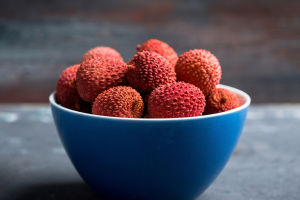Coffee, beloved, sought-after, and steeped in enthusiasm, transcends its status as a mere beverage; it embodies a culture and a way of life.
However, our appreciation of coffee often remains confined to its aroma and caffeine content, neglecting the rich tapestry of flavors it conceals within.
This article aims to guide readers through an exploration of coffee's flavor journey, from bean to cup, to discover and appreciate its multifaceted palate.
1. The Origins of Coffee Beans: Varieties and Regions
The taste of coffee is shaped by myriad factors, with the variety of coffee beans and their geographical origins paramount.
Arabica and Robusta are the two most prevalent types of coffee beans, each offering distinct flavor profiles. Arabica beans are prized for their fragrant, delicate flavors, while Robusta beans boast a richer, more robust bitterness.
Beyond variety, the region where coffee beans are cultivated profoundly influences their flavor. Variances in climate, soil composition, and altitude all leave indelible imprints on the quality of coffee beans.
For instance, Kenyan coffee often exudes citrusy and tart notes, whereas Colombian coffee is renowned for its nutty, chocolatey undertones.
2. The Artistry of Coffee Roasting: Hue and Flavor
Roasting constitutes a pivotal phase in coffee production, dictating the color and flavor profiles of the beans. Roasting levels typically span three categories: light, medium, and dark roast, each endowing coffee with distinct taste characteristics.
Light roasts retain the innate essence of coffee beans, offering a nuanced flavor profile and subtle acidity. Medium roasts strike a harmonious balance, marrying acidity with sweetness to create a universally appealing brew. Dark roasts yield intense, bittersweet flavors, catering to fans with a penchant for boldness.
3. From Bean to Cup: Achieving Harmony and Complexity
In the ritual of savoring coffee, grinding and brewing processes assume paramount importance. Varying degrees of grind fineness and brewing methods yield vastly different tasting experiences.
Coarsely ground beans lend themselves well to French press or drip brewing, preserving the coffee's richness and aroma. Finely ground beans are better suited for extraction via espresso machines, extracting the beans' full-bodied flavor and silky texture.
Furthermore, brewing time and temperature significantly influence coffee's taste profile. Prolonged or insufficient brewing times upset flavor equilibrium, while excessive or inadequate water temperatures compromise aroma and taste.
Mastery of brewing time and temperature thus stands as the hallmark of crafting the perfect cup of coffee.
4. The Cultural Allure of Coffee: Taste and Tradition
Coffee transcends its status as a mere beverage, embodying a rich cultural tapestry and a philosophy of life.
Whether engaged in lively conversations at a café or leisurely enjoying a morning cup at home, the experience is relaxation and enjoyment. Coffee culture varies across regions, each locale boasting unique customs and rituals.
In Italy, adding fine milk foam to coffee produces a velvety latte. These diverse practices reflect people's distinct coffee preferences and reverence for life.
In this era of flux and ingenuity, coffee retains its allure as a timeless yet contemporary indulgence. Whether relishing a freshly brewed pour-over or luxuriating in a creamy latte, each sip celebrates life's simple pleasures.
Let us embark on a journey to uncover the boundless charm of coffee and revel in its diverse flavor universe.


